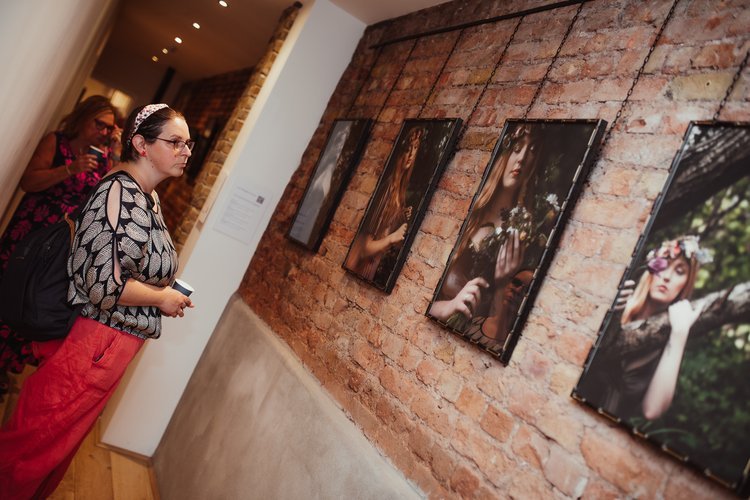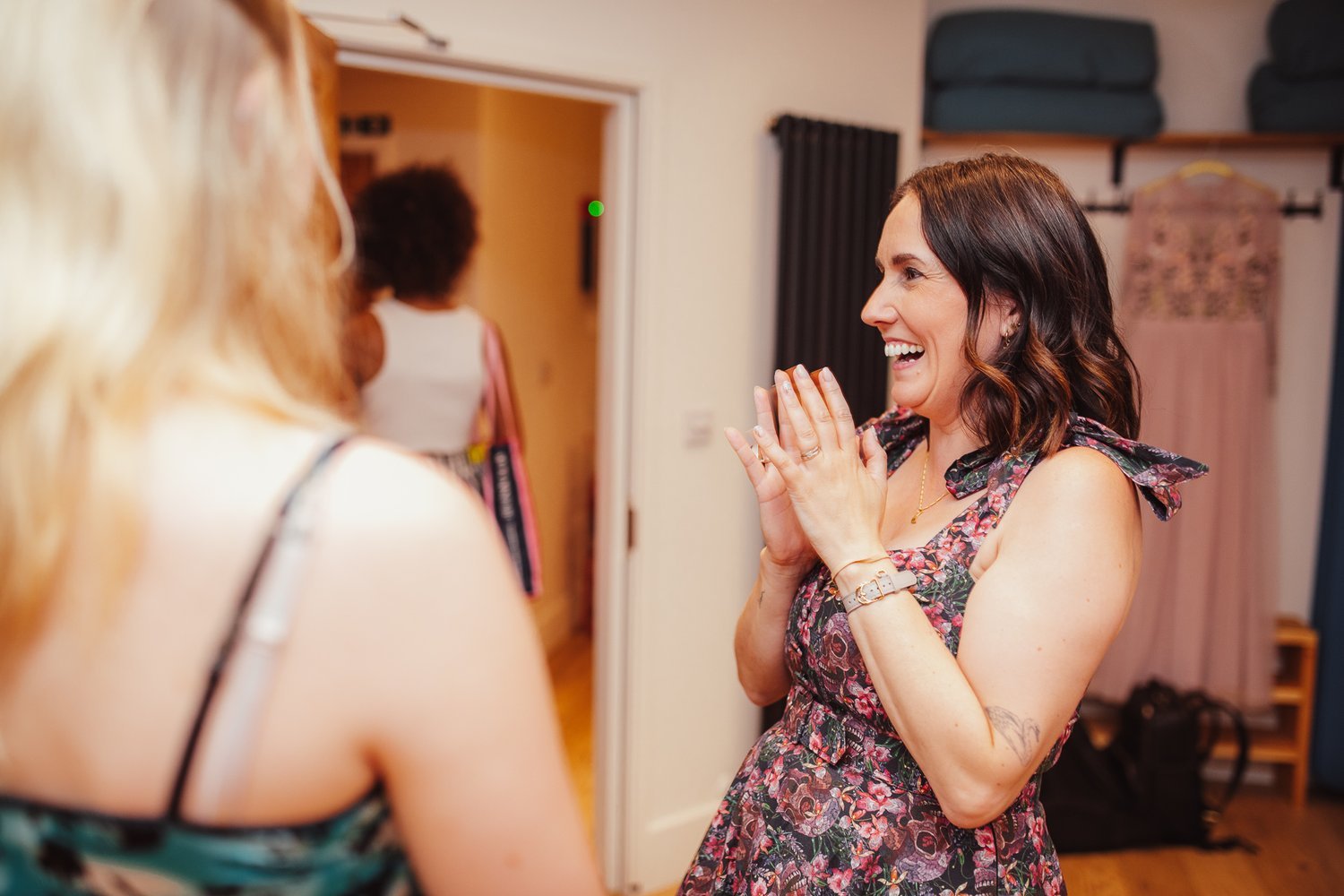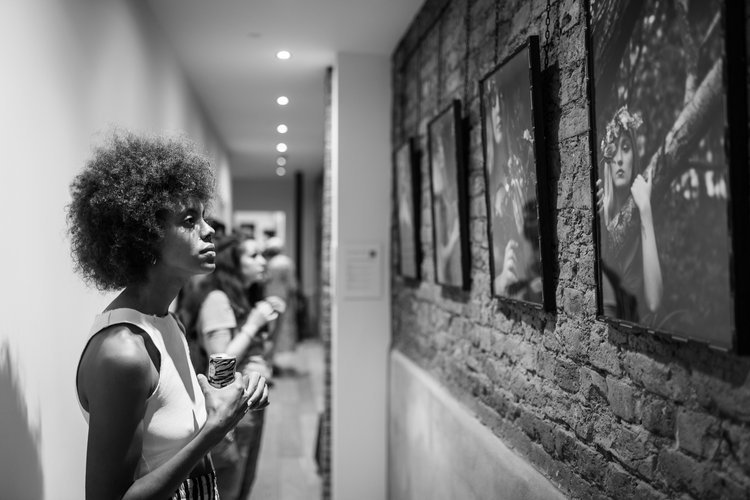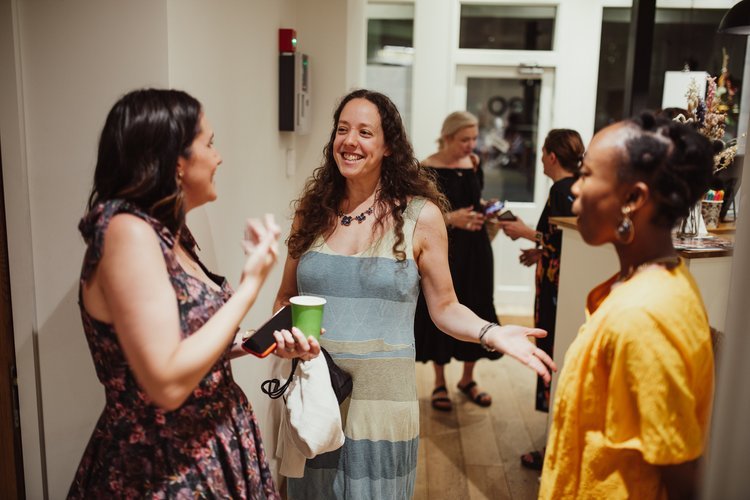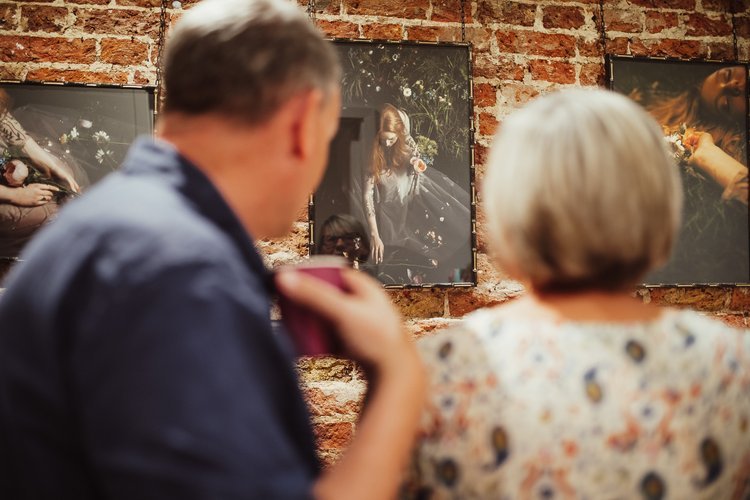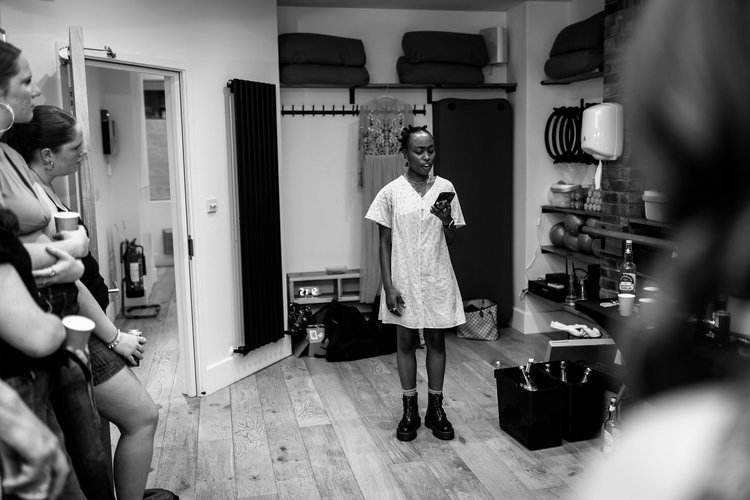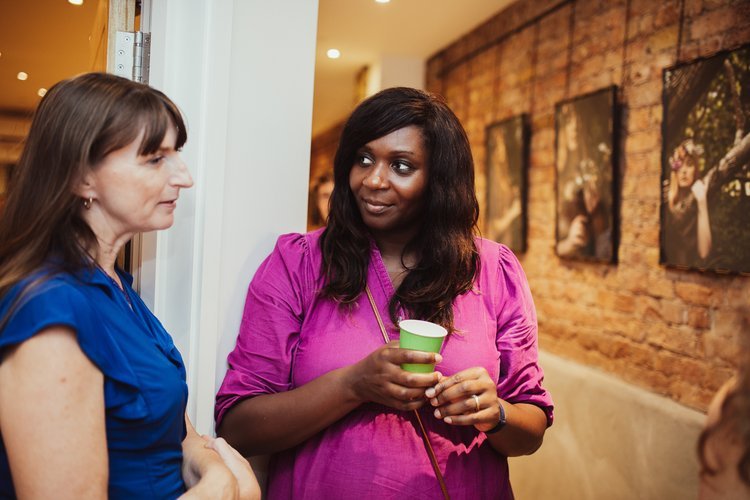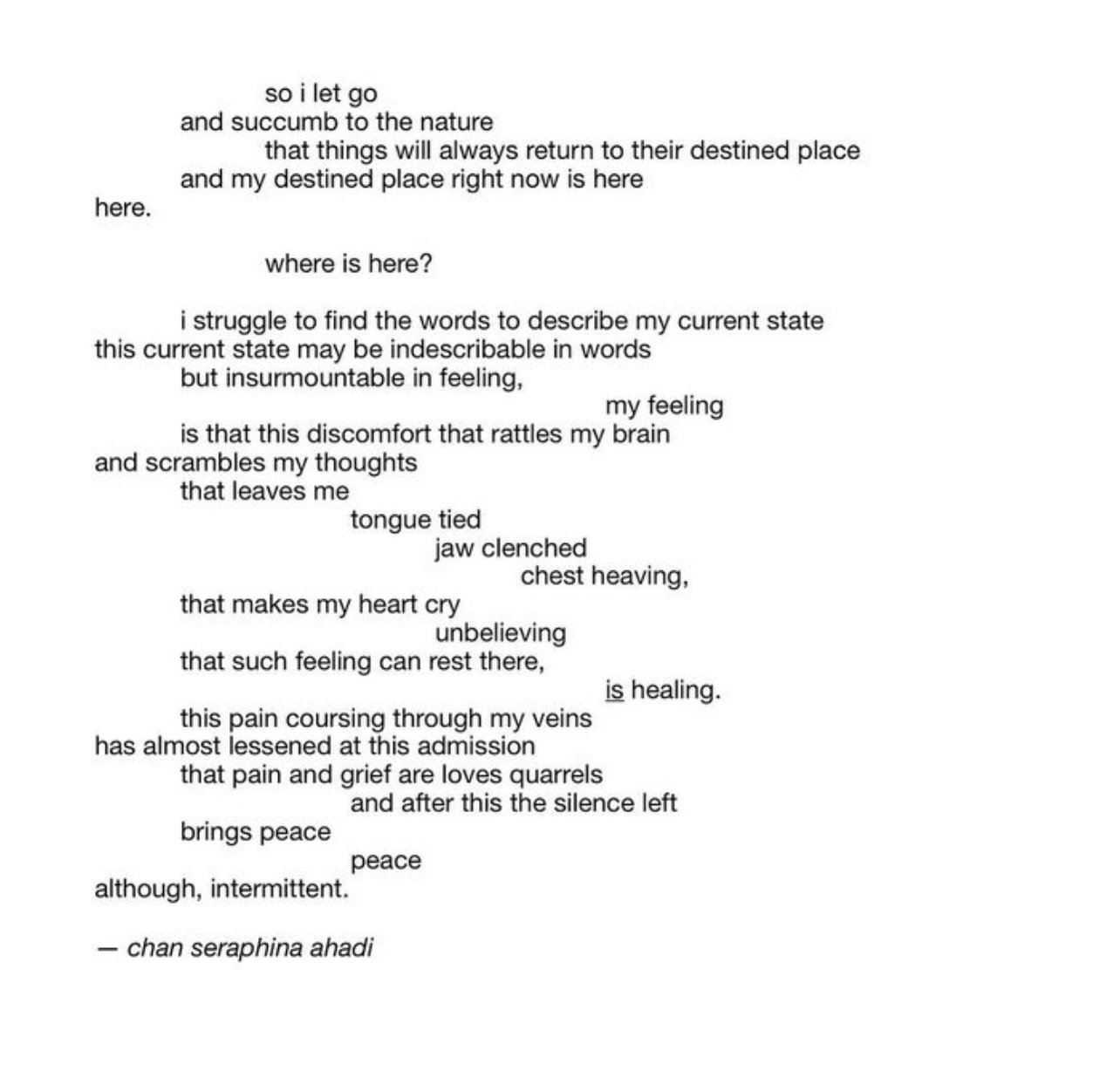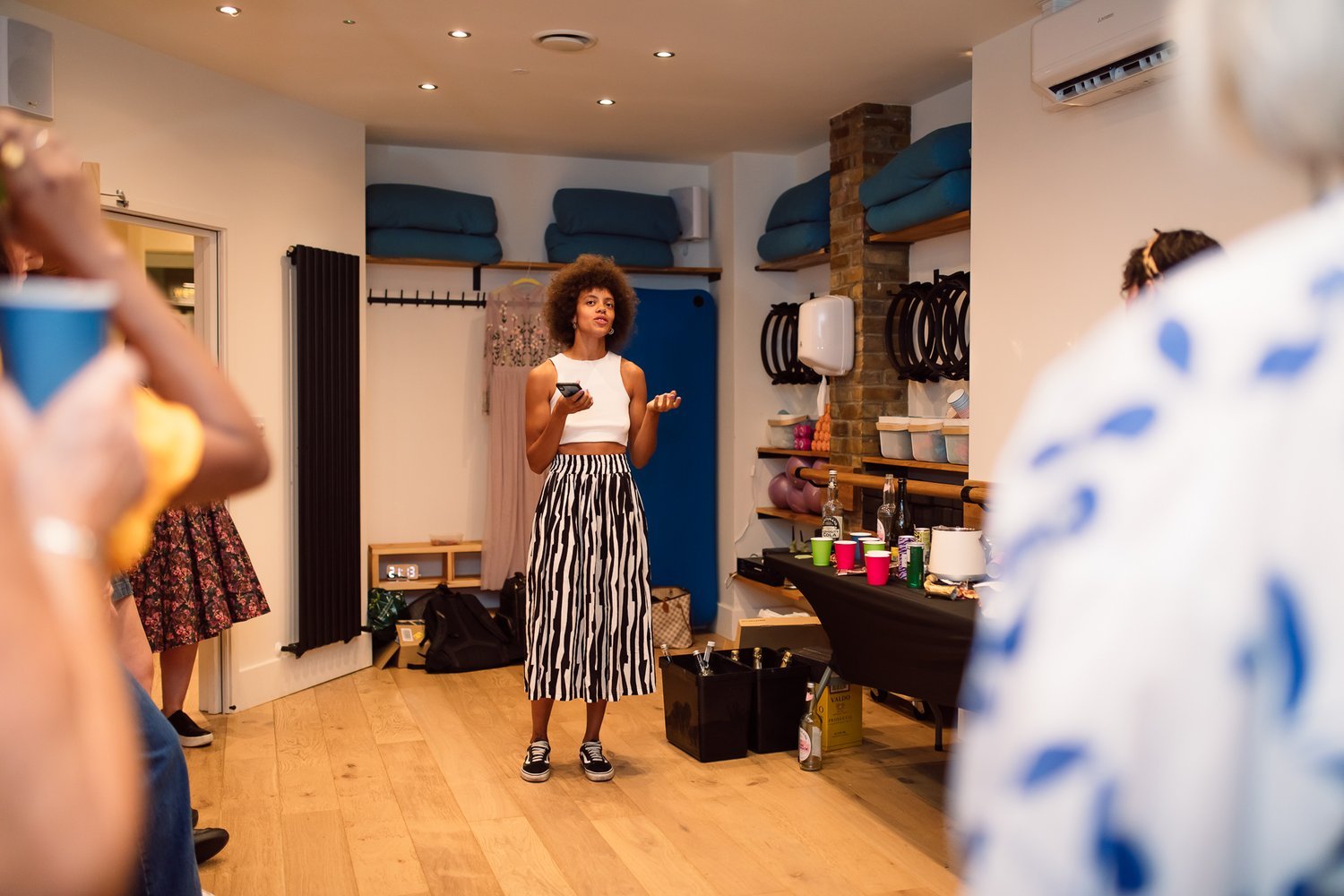My First Exhibition - Lost Daughter
Embark on an introspective voyage of the soul, where the photographic medium intertwines with the timeless echoes of Shakespearean tragedy. "Lost Daughter" awaits you, ready to awaken emotions, provoke introspection, and offer a collective embrace as we navigate the delicate balance between light and dark, despair and healing.
Lost Daughter ran over the summer of 2023 and culminated in a private view where we celebrated with a glass of something cold, heard from the creators as well as poets performing their own work about grief. Music created by the plants of the location set the tone to contemplate and spend time with the images…
Here’s some feedback from those on the night:
“My grandad passed away a few years ago and learning about the deeper meaning of Ophelia reminded me of the grief I went through/still am going through. This makes me feel stronger in myself and also proud to be part of the grief community.”
“Love that these beautiful images were created in a special local place and lovely to hear your strong connection to it.”
“Thank you for a beautiful event. It has resonated with me as I have been to many funerals this year. The music and poetry were very powerful. I wrote my own poem to help my grief losing babies. Thank you Donna and team!”
“You opened your heart and bared your soul. So brave, so beautiful - so needed!”
“There is something about tragedy that demanded to be revisited again and again in the hope you can change it, even though you never can.”
“I loved the image with Ophelia laying on the ground eyes closed, losing her grip on the headdress which seems to symbolise her grief.”
Huge thanks to &Osteo for hosting the night and the poets Cleo Patterson Ramsey and Chan Seraphina Ahadi for sharing something so vulnerable and deep that helped us to connect more deeply to the images.
Listen to the amazing Cleo’s performance here
HOW THE IDEA CAME ABOUT…
Lost Daughter is inspired by the much-loved Pre-Raphaelite painting by British artist Sir John Everett Millais in 1852. Ophelia lays motionless on the water, eyes heavenward. An ethereal scene of floating petals and a gentle stream, the weight of sorrow is palpable. The first time I saw it in the Tate Britain a few years ago, I was transfixed by every inch of the canvas. Elizabeth Sidall was the model who was actually an artist in her own right (her work being exhibited currently at the Tate) and she modelled for Pre-Raphealite artists to fund her own work. She was married to Gabrial Rosetti and was his muse until she tragically died young. Nature is depicted and regarded almost as important as the subject, something that the Pre-Raphealites were renowned for. Nature was important in these set of images too firstly as the backdrop (and another character in the scene) and secondly the flowers chosen to dress the scene are symbolic and correlate to the narrative as included in Shakepeare’s original text. As a beauty- seeker, nature is necessary for my own mental wellbeing and grounding and being near water is particularly healing, teaching me about the transient nature of my emotions.
“Beauty can emerge from the darkness”
RESEARCH AND PERSONAL CONNECTION TO THE THEME
Although the subject matter is about her losing her life after the death of her father in Shakespeare’s Hamlet, the original image has always filled me with hope. I wanted to portray raw and melancholic elements to my images, as well as beauty and optimism. Anyone who has journeyed through grief will recognise how our senses are heightened to see beauty when we find ourselves in dark places. There is a duality and paradox to beauty and sadness, something echoed recently when I saw Yayoi Kusama’s Chandelier of Grief (currently on at the Tate Modern).
This project came from a deep internal desire to explore the character of Ophelia and make her inner world visible. Only once I started did I realise how deeply I resonated with the material and how it would help me express the loss of my own father in childhood.
WHY THIS PROJECT IS IMPORTANT AND TIMELY
There is no greater time than now to express, consider and learn about the complexities of grief especially in our Western culture where we have very few rituals surrounding death. Considering what we are facing in our modern world, it has never seemed more urgent. Our collective grief of the global pandemic and the recent queen’s death as well as increasing polarisation, cost of living crisis and mental health pandemic, especially for young people. I hope for this project to give space to consider, sit with and express grief as well as educate and support those who are grieving close to us. With listening ears, an open heart and education we can do much better. And we may even start our own personal odyssey with grief through shared experiences and creativity.
BEHIND THE SCENES
To make this happen, I gathered a creative team together one evening by the Quaggy river in Chinbrook meadows in the London Borough of Lewisham near my home, using my Leica SL2, vintage filters and one speed-lite flash with an umbrella. I’m very grateful to my model Anna-May, florist extraordinaire Rosie Barratt, make up artist Nicole, young photographer Natasha assisting and Director of Photography John Ford for trusting me and helping me bring Lost Daughter to life.
“Grief isn’t something to get over but get into fully. It’s heartbreak isn’t a malady but can be a portal to depth and communion, ripening into a grounded bareness of being that guides into deeper and far more humane ways of being.”
THE EXHIBITION
Gazing upon the hauntingly beautiful photographs, you will find yourself transported to a realm both ethereal and melancholic. Each frame whispers a tale of shattered dreams, untold pain and the weight of loss carried upon fragile shoulders. With great sensitivity, I have tried to delicately capture the internal world experienced when grappling with grief's unyielding shadow as well as the transformative journey through sorrow.
The photographs reveal the vulnerability and strength entwined within the human spirit as it navigates the turbulent waters of anguish. Like Ophelia's fate, these images symbolise the fragility of life and the ephemeral nature of existence itself.
Within the narrow gallery space, an interactive installation beckons you to contribute your own expressions of grief. As you leave your mark, be it a written word, a memory, or a symbol of remembrance, you become an integral part of this collective exploration. Together, we acknowledge the universal nature of grief, finding solace in shared experiences and fostering a sense of connection and understanding.
“Give sorrow words; the grief that does not speak knits up the o-er wrought heart and bids it break.
”
I didn’t realise the importance for my own journey with grief and personal healing that making these images would have on me. On the shoot we were all very moved by the moment and we want to translate and replicate that profound experience for us into a profound experience for you. Read more of my story of losing my dad in childhood and why I passionately believe in the power of creativity and expression of emotions over here on my blog. Having felt numb for many years, I want others to avoid the destructiveness that avoiding my emotions had on my life. Listen here to the playlist that Anna-May and I listened to as we captured the images one summer’s eve.
Looking forward to sharing this with you and the world soon.
With love and hope,
Donna x
P.S. If you’re struggling with grief right now please talk to someone close to you or reach out to a professional therapist. There are more resources in my blog above.
Step into a realm where emotions converge and the depths of sorrow find solace. "Lost Daughter" invites you on an immersive photographic odyssey, paying homage to Shakespeare's tragic heroine, Ophelia, and exploring the profound complexities of grief as she journeys through the wild and into the water. This thought-provoking exhibition offers a poignant space to reflect, empathise, and heal as you follow Lost Daughter’s grief from land to water, amidst natural serene beauty.
“O silent wood, I enter thee
With a heart so full of misery
For all the voices from the trees
And the ferns that cling about my knees.
In thy darkest shadow let me sit
When the grey owls about thee flit;
There will I ask of thee a boon,
That I may not faint or die or swoon.
Gazing through the gloom like one
Whose life and hopes are also done,
Frozen like a thing of stone
I sit in thy shadow but not alone.
Can God bring back the day when we two stood
Beneath the clinging trees in that dark wood?”
— WRITTEN BY ELIZABETH SIDDALL, THE ORIGINAL OPHELIA


